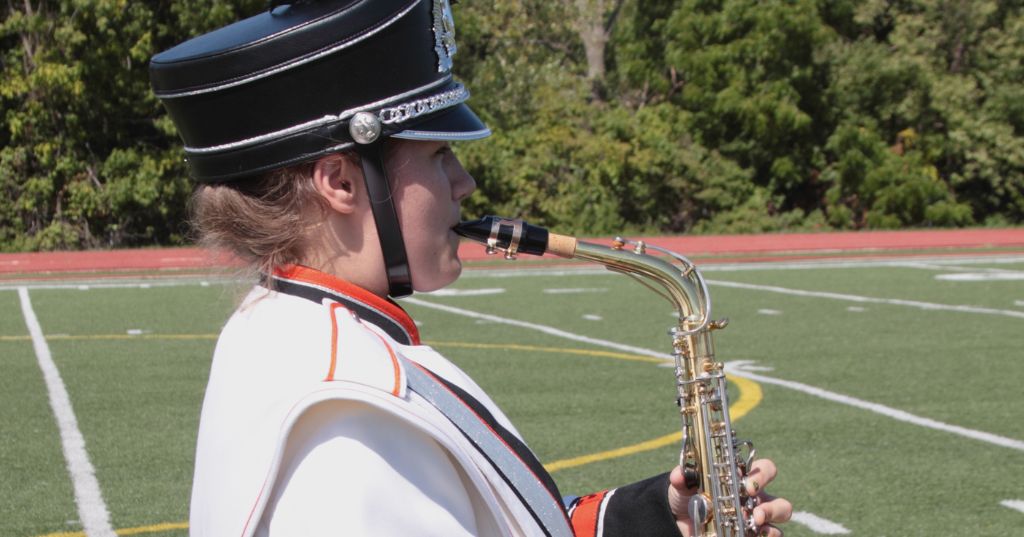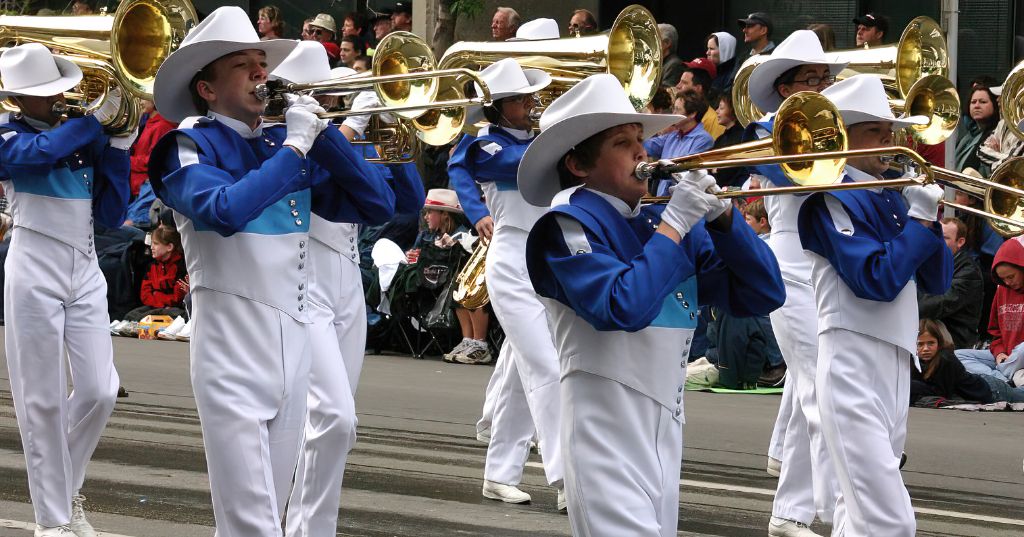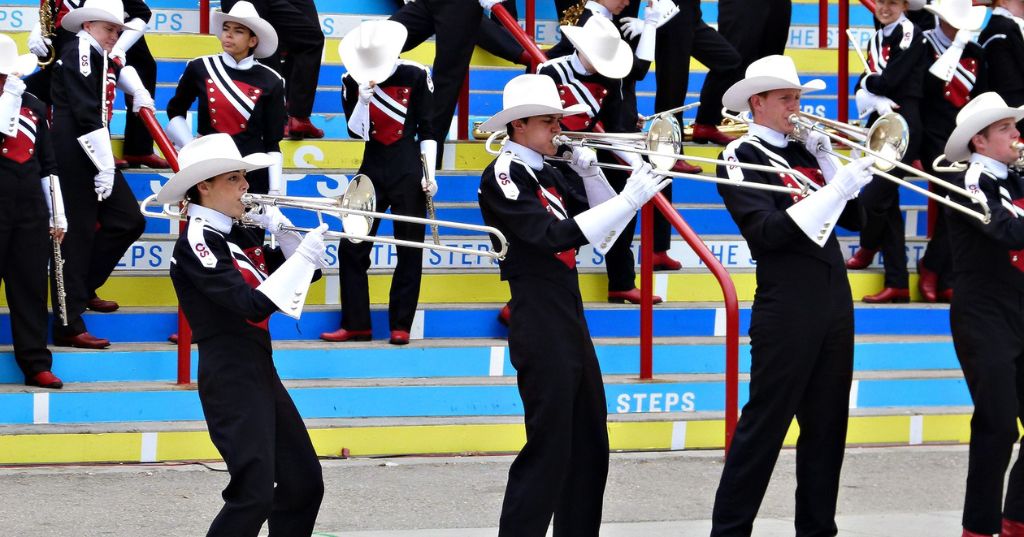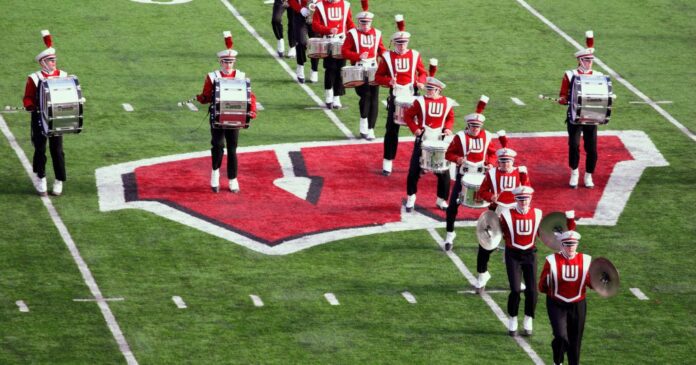Marching band a mesmerizing sight of music and precision choreography, has long been a topic of discussion when it comes to its classification as a sport. While several argue that it is unquestionably a sport due to its physical demands and competitive nature, others trust it falls more under the category of an art form or performance activity. In this blog post, we will research into the world of marching bands to dissect the question is marching band a sport.
Defining Sports and Marching Bands
Before we discover whether marching band fits the criteria of a sport, it is crucial to understand the defining features of together sports and marching bands.
A sport is usually defined as an action involving physical action and skill in which individuals or teams compete against each other. It often has regulations, rules, and impartial criteria to define winners and losers. Common instances of sports contain football, basketball, and soccer, where physical prowess and competition are at the lead.
On the other side, marching bands are musical bands that perform coordinated movements and musical arrangements although marching or parading. They often contribute in occasions such as halftime shows at football games, parades, and competitions. Marching bands combine music, dance-like choreography, and visual elements to make captivating performances.
Is Marching Band A Sport?

Now we have a basic understanding of sports and marching bands let’s discover various aspects to determine is marching band a sport:
Physical Demands
One of the primary quarrels in favor of considering marching band as a sport is the physical demands it places on members. Marching band members, identified as “marchers,” endure rigorous physical training and preparing to meet the requirements of their performances.
Marchers often spend hours practicing and improving their routines. They must march in precise formations, execute complex dance steps, and play their instruments entirely while maintaining impeccable posture and coordination. The physical stamina required to perform these tasks is comparable to that of athletes in customary sports.
Furthermore, marching band members are exposed to the elements. Whether they are performing under the sweltering sun or in inclement weather, they must endure stimulating conditions that test their physical fortitude.
Competitive Nature
Competition is a essential element of sports, and marching bands are no exclusion. Many marching bands participate in competitions at local, state, and even nationwide levels. These competitions are judged by experts who assess various aspects of the performance, such as music, marching technique, and complete presentation.
Marching bands work untiringly to improve their skills and earn top honors in these competitions. Just like contestants in traditional sports strive for victory, marching band members aim to excel and achieve recognition for their hard work and devotion.
Rules and Regulations
Sports are often defined by specific rules and regulations that rule the game and ensure fairness. Similarly, marching bands work within a framework of rules and guidelines. These rules command aspects such as the size of the band, the use of instruments, and the period of performances.
In competitive sceneries, marching bands must follow to strict rules and criteria set by governing organizations like Bands of America (BOA) or the United States Scholastic Band Association (USSBA). These rules outline the counting system and the expectations for performances, making it similar to the structure found in many sports.
Teamwork and Collaboration

Teamwork is a core part of both sports and marching bands. In a marching band, members must work together seamlessly to make a cohesive and visually stunning performance. Each member has a exact role and must rely on their fellow marchers to thrive.
Coordinating activities, playing instruments, and staying in formation require a high level of solidarity and collaboration. Just as in team sports, marching band followers learn to trust and depend on each other to accomplish their goals.
Physical Fitness and Health Benefits
Participating in marching band offers some physical fitness and health benefits, similar to those gained from engaging in sports. Marchers engage in aerobic workout through constant movement and marching. This physical activity helps improve cardiovascular health, endurance, and complete fitness.
Additionally, marching band members develop strength and litheness, which are essential for performing the demanding choreography and holding instruments for lengthy periods. The physical conditioning increased from marching band can have a positive impact on participants’ comfort and health.
Despite these convincing arguments, there are still factors that differentiate marching band from outdated sports.
Artistic Expression
One of the main differences between marching band and sports is the importance on artistic expression. While sports prioritize competition and winning, marching bands place a noteworthy focus on creating visually and musically engaging performances.
Marching bands have the independence to select and arrange their music, design their creations, and incorporate creative elements into their routines. This creative aspect sets marching band apart from the strict adherence to rules and guidelines found in sports.
Subjective Judging

The outcome is often determined by objective measures, such as goals recorded, points earned, or race times in sports. In contrast, marching band competitions include subjective judging, where experts assess the artistic and technical features of a performance.
This bias can lead to debates about fairness and interpretation, as judges may have changing opinions on the quality of a performance. While objective principles exist in marching band competitions, such as music accuracy and exactness of movements, a significant portion of the assessment relies on subjective judgment.
Lack of Physical Contact
Another key difference among marching band and many sports is the absence of physical contact. In sports like football or rugby, physical contact is an integral part of the game. Sportspersons must tackle, block, or defend against rivals physically. In contrast, marching band performances do not include physical contact with challengers.
Conclusion
In the end, whether is marching band a sport is a matter of perspective. It shows several characteristics commonly associated with sports, such as physical demands, competition, rules and regulations, teamwork, and physical fitness profits. However, it also owns unique elements of artistic expression, subjective judging, and the lack of physical contact that distinguish it from traditional sports.
Eventually, whether one classifies marching band as a sport or not may rest on their personal definition of what constitutes a sport. Some may debate that it is a sport in its own right, whereas others may view it as a performance art or movement. Regardless of classification, marching band undoubtedly needs dedication, skill, and hard work from its members and it continues to fascinate audiences with its mesmerizing performances.

































